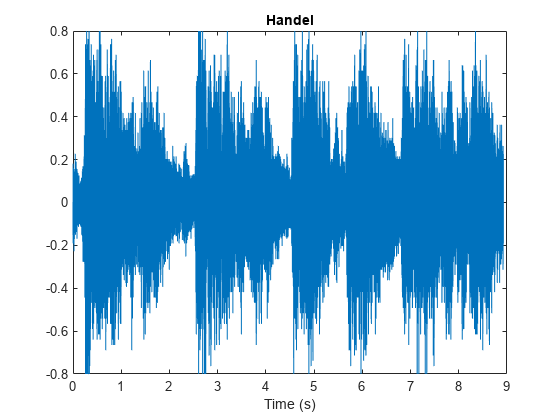icqt
Inverse constant-Q transform using nonstationary Gabor frames
Description
xrec = icqt(cfs,g,fshifts)xrec, of the
coefficients cfs. cfs is a matrix, cell
array, or structure array. g is the cell array of nonstationary
Gabor constant-Q analysis filters used to obtain the coefficients
cfs. fshifts is a vector of frequency
bin shifts for the constant-Q bandpass filters in g.
icqt assumes by default that the original signal was
real-valued. To indicate the original input signal was complex-valued, use the
'SignalType' name-value pair. If the input to cqt
was a single signal, then xrec is a vector. If the input to
cqt was a multichannel signal, then
xrec is a matrix. cfs,
g, and fshifts must be outputs of
cqt.
Examples
Input Arguments
Output Arguments
Algorithms
The theory of nonstationary Gabor transforms (NSGTs) was introduced by Jaillet [1] and Balazs,
Dörfler, Jaillet, Holighaus, and Velasco [2]. Dörfler,
Holighaus, Grill, and Velasco [3], [4] develop a
framework for an efficient, perfectly invertible CQT. The algorithms used in cqt and
icqt were developed by Dörfler, Holighaus, Grill, and Velasco
and are described in [3], [4]. In [5], Schörkhuber,
Klapuri, Holighaus, and Dörfler develop and provide algorithms for a phase-corrected CQT
transform which matches the CQT coefficients that would be obtained by naïve
convolution. The Large Time-Frequency Analysis Toolbox (https://github.com/ltfat) provides an extensive suite of algorithms
for nonstationary Gabor frames [6].
References
[1] Jaillet, Florent. “Représentation et traitement temps-fréquence des signaux audionumériques pour des applications de design sonore.” Ph.D. dissertation, Université de la Méditerranée, Aix-Marseille II, 2005.
[2] Balazs, P., M. Dörfler, F. Jaillet, N. Holighaus, and G. Velasco. “Theory, Implementation and Applications of Nonstationary Gabor Frames.” Journal of Computational and Applied Mathematics 236, no. 6 (October 2011): 1481–96. https://doi.org/10.1016/j.cam.2011.09.011.
[3] Holighaus, Nicki, M. Dörfler, G. A. Velasco, and T. Grill. “A Framework for Invertible, Real-Time Constant-Q Transforms.” IEEE Transactions on Audio, Speech, and Language Processing 21, no. 4 (April 2013): 775–85. https://doi.org/10.1109/TASL.2012.2234114.
[4] Velasco, G. A., N. Holighaus, M. Dörfler, and T. Grill. "Constructing an invertible constant-Q transform with nonstationary Gabor frames." In Proceedings of the 14th International Conference on Digital Audio Effects (DAFx-11). Paris, France: 2011.
[5] Schörkhuber, C., A. Klapuri, N. Holighaus, and M. Dörfler. "A MATLAB® Toolbox for Efficient Perfect Reconstruction Time-Frequency Transforms with Log-Frequency Resolution." Submitted to the AES 53rd International Conference on Semantic Audio. London, UK: 2014.
[6] Průša, Z., P. L. Søndergaard, N. Holighaus, C. Wiesmeyr, and P. Balazs. The Large Time-Frequency Analysis Toolbox 2.0. Sound, Music, and Motion, Lecture Notes in Computer Science 2014, pp 419-442.
Extended Capabilities
Version History
Introduced in R2018a
